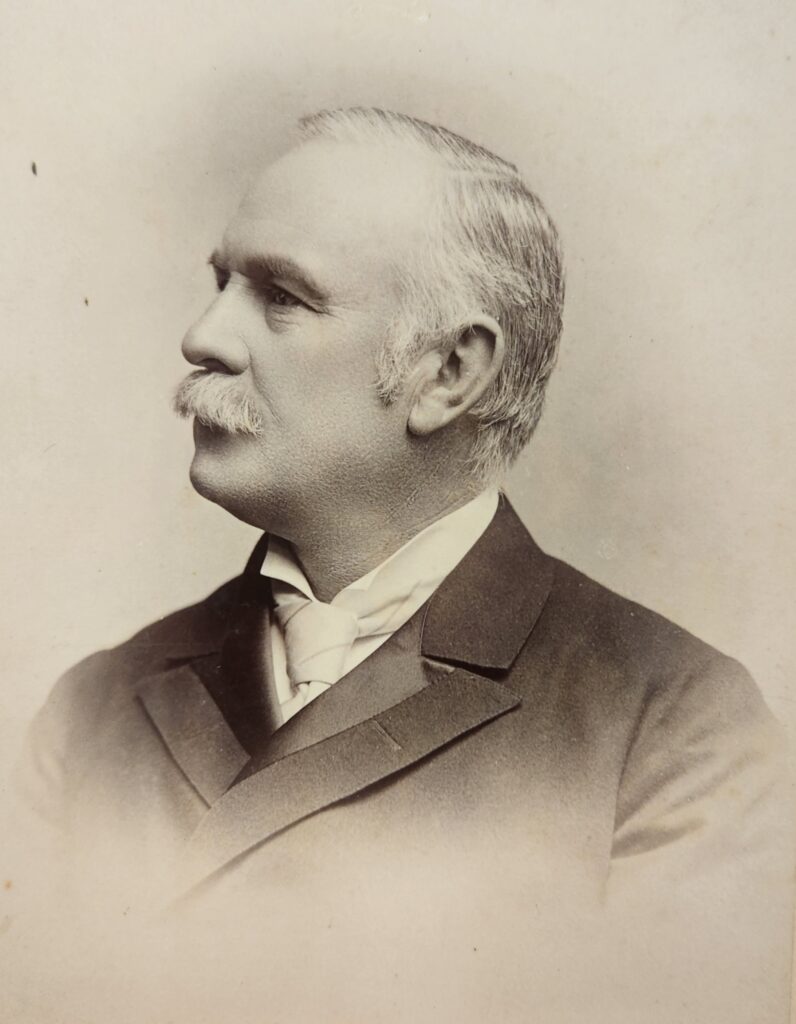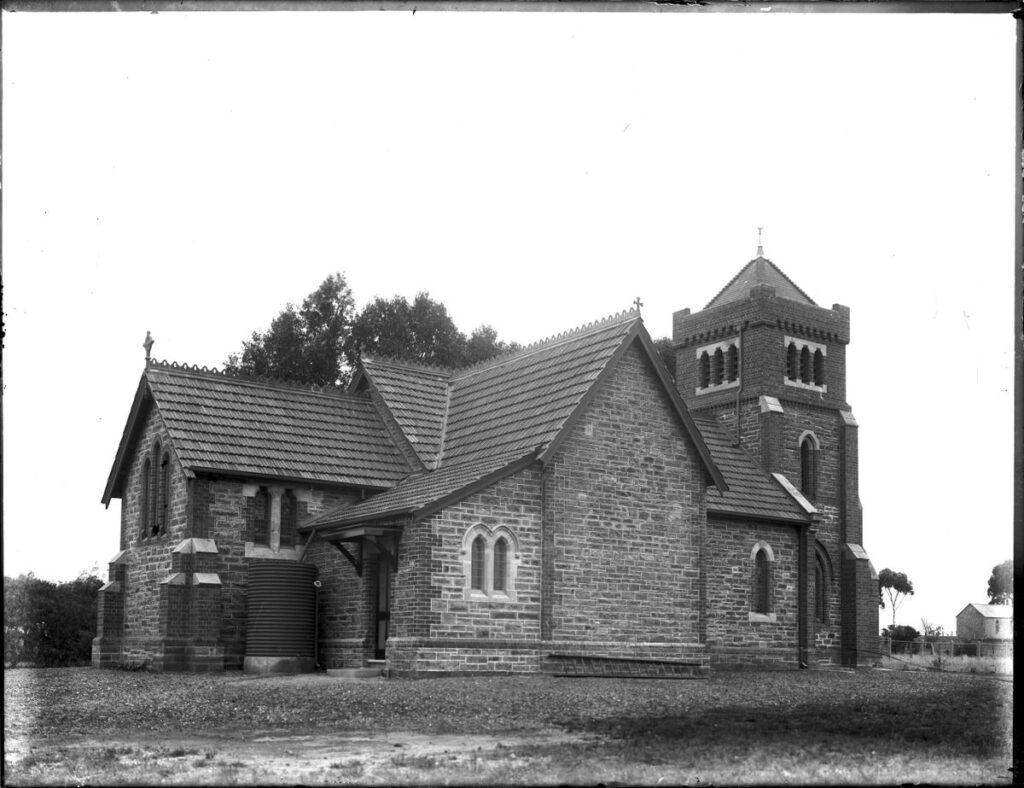14 Dec 2023 The life of Henry Dutton: the man who transformed Anlaby
Anlaby as we see it today is mostly thanks to the vision of Henry Dutton, the second generation of the family to own the property. Thanks to him, the house was modified, the gardens extended and beautified, and many of the stables and outbuildings were constructed. Who was Henry, and how did he come to be at Anlaby?
Henry Dutton was born in March 1844 in Melbourne, Victoria. His father, William Hampden Dutton, was a pioneering pastoralist based in Victoria and New South Wales and later in South Australia. In 1839, he purchased 15,000 acres in the Mount Barker Special Survey, one of the first special land surveys in the young colony, which was later sold to German migrants settling in Hahndorf. Henry’s mother, Charlotte da Silva Cameron, had Scottish/Portuguese ancestry. William and Charlotte’s family prospered; however, in 1845 after several poor business decisions, William was declared insolvent, and he died in reduced circumstances in Melbourne in 1849. Henry was only five years old.
Following William’s death, the family moved to Adelaide. Henry was educated at St Peter’s College, Adelaide, starting around 1850. He received a Certificate of Honors in June 1852, demonstrating his academic qualities from a young age. It may have been at St Peter’s, with its strong Anglican bent, that Henry became strongly devoted to the Christian faith, which he carried with pious devotion throughout his life.
Before the age of 25, Henry experienced further heartbreak: four of his seven siblings died: the eldest brother and head of the fatherless family, William; Mary, who died a married woman in Sussex, England; Luduvina, who left four young children behind; and the youngest sibling, Ewin, who died at age 16 at Glenelg. Henry’s young life was marred by grief, and tragically, there was more to come later.

After so many tragic deaths, a glimmer of happiness appeared. On 10 May 1873, Henry married Helen Thomas of Geelong in the St. George’s Anglican Church, Queenscliff, Victoria. On his marriage certificate, it records he was living at Palmer Place, North Adelaide. In the meantime, he had been working as a teller and clerk for the Bank of South Australia. Initially, he worked at Yankalilla, then moved to Brighton in 1872. While working at Brighton, Henry became involved in St Jude’s Anglican Church, where he served as a warden and organist. Upon his marriage in 1873, the congregation presented him with a silver plaque, which read, “Presented by the Congregation and friends of S. JUDE’S, BRIGHTON, SOUTH AUSTRALIA, to Henry Dutton, on his wedding day, in grateful recognition of his untiring and devoted services to MOTHER CHURCH. 10 May 1873.”

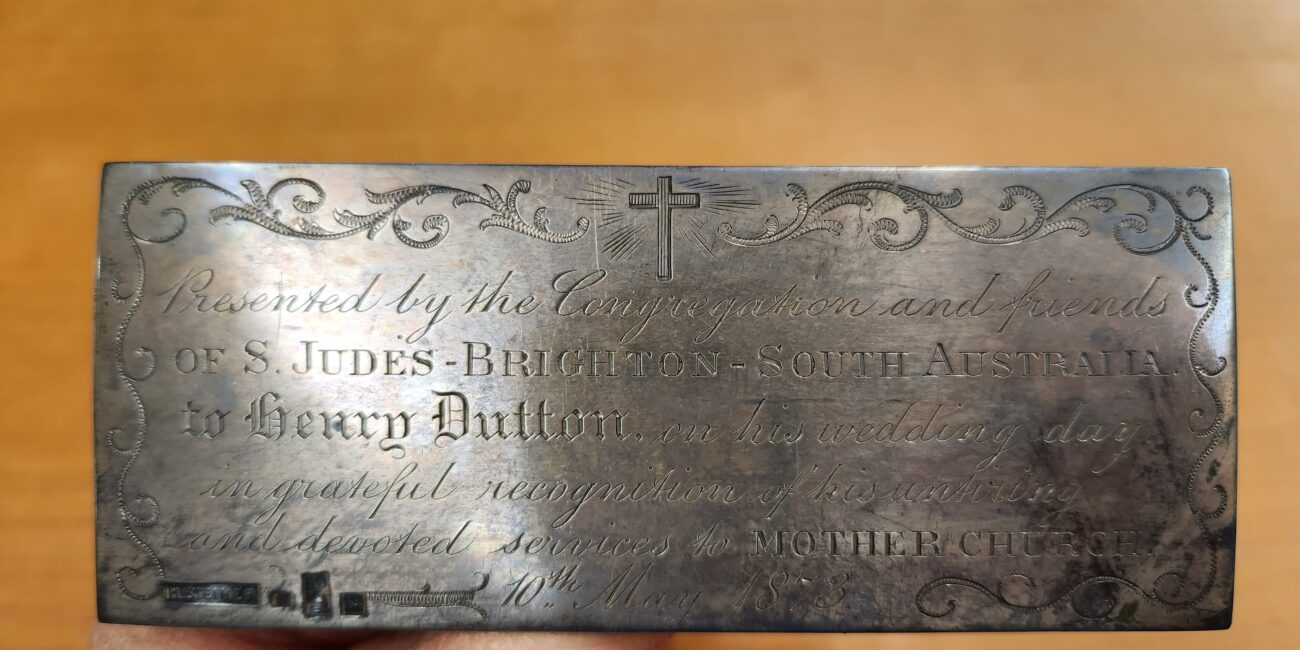
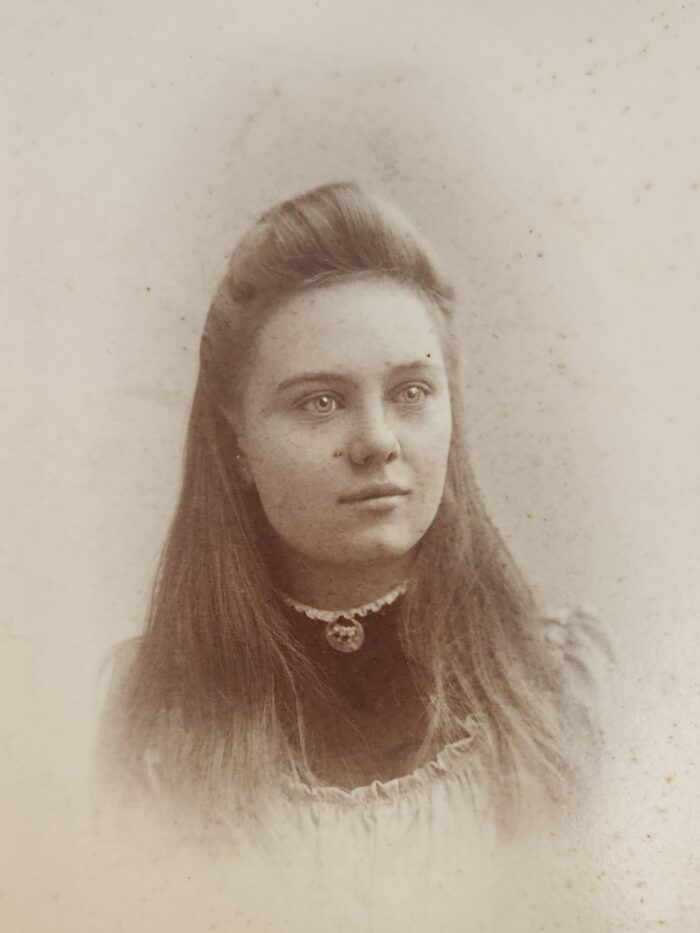
Before long, Henry and Helen started a family. Together, they had two children: a daughter, Ethel da Silva Dutton, born on 3 February 1876, and three years later, on 13 February 1879, their second child, a son, Henry (Harry) Hampden Dutton. The young family moved to Mount Pleasant in 1880, where Henry served as the Manager of the local branch of the Bank of South Australia. Over the next ten years, the family became accustomed to the rhythm of life there: Ethel and Harry attended the local school, Helen became accustomed to domestic life, and Henry managed the local bank while also serving on the local School Advisory Board and at St. John’s Anglican Church, Mount Pleasant.
While at Mount Pleasant, Henry’s passion for gardening blossomed. He grew pelargoniums, begonias, bulbous dahlias, ferns, and much more for the annual shows held by the Mount Pleasant Agricultural, Horticultural, and Floricultural Society in the 1880s, winning several prizes in the process. Even Ethel and Harry were involved during the local show, entering dressed doll and handwriting competitions respectively. Henry read up-to-date literature on garden practice and design and constantly sought to improve and expand his private collection.

In 1890, Henry’s life changed dramatically. On 22 April, his uncle and founder of Anlaby, Frederick Dutton, died aged 78 in London. In his will, Frederick left most of his South Australian assets to Henry, which included, among others, Anlaby Station. Henry inherited the modern-day equivalent of over one hundred million dollars. As a result, he left his job as a bank manager and moved to Anlaby in mid-1890. At a farewell banquet held at the Talunga Hotel, Mount Pleasant, in June, members of the community paid tribute to his service: “his friends could not allow him to depart without showing the esteem and regard in which he was held…his departure would be a distinct loss.” Other speakers went on to describe him as “kind and gentlemanly in his conduct,” “courteous,” and “ready and willing to lend assistance.” Henry was presented with a gold chain as a memorial of friendship.
Though Henry was already economically comfortable, his change in circumstances in 1890 cannot be understated. He went from working a day job as a bank manager to becoming one of the most extensive landowners in the country. His responsibilities quickly mounted: there was an estate to become acquainted with, a business to run, staff to manage and pay, work to be done redecorating the house, the re-establishment of his family, and familiarisation with the local community. It was no small feat.
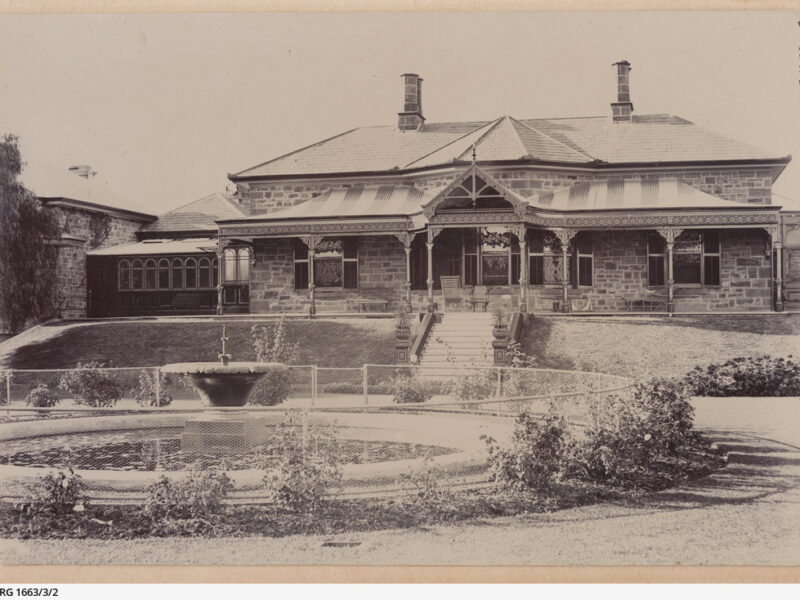
Once the initial phase passed, Henry started turning his eye to his passion: gardening. One of his first projects was the construction of an enormous conservatory designed and built by A. Simpson & Son, based in Adelaide. The conservatory was the first of several additions – from a pelargonium house and rockery to a cucumber house and vinery – to be added to the gardens. In addition, he established roseries, planted a wide variety of imported trees, laid pipelines, erected vast trellis systems, marked out a tennis court, and much more. Frederick’s inheritance allowed him the freedom to invest in his passion.
This tranquil and exciting time was cruelly shattered in February 1892. Henry and his wife and children were holidaying at Victor Harbor. Ethel, her brother Harry, and another young girl were climbing around the rocks on the western point of Granite Island. Ethel dropped her penknife and, thinking nothing of it, climbed around a rock to fetch it. In doing so, she lost her footing and fell 25 metres into the water below. Reports indicate that Ethel was dashed on the rocks before landing in the water, death being instantaneous. Harry attempted to rescue his elder sister to no avail; her body was retrieved by boat a short time later. Ethel was only 16 years old. As is often the case with the death of a young person, Ethel’s funeral was enormous. The service was held at Christ Church, Palmer Place, which was only a few doors down from Henry’s Adelaide residence, and the committal was at the North Road Cemetery, Nailsworth.
Though Henry’s diaries from this time do not exist, the death of his only daughter must have been soul-crushing. After a period of mourning, Henry started to formulate the idea of building a grand church in Ethel’s memory. The result was St. Matthew’s Anglican Church, Hamilton, which commenced in 1896 and was finally finished in 1907. It resembles a cathedral, for it is fitted with the finest silverware, needlework, stained glass, and woodwork imaginable. It remains a moving, awe-inspiring response to a tragedy of shocking proportions.
Henry’s wife, Helen, was certainly affected by the loss: she practically withdrew from social life, focusing on her talent for embroidery. Following her own death on 8 October 1901, one correspondent wrote, “Ever since the tragic death of her daughter [she] has been practically an invalid, suffering from heart disease.” Poignantly, Ethel was exhumed and reburied with her mother at Hamilton, near Anlaby.
Helen Dutton c.1890. Source: Source: SLSA PRG 396/227/7. With permission from the Dutton family.
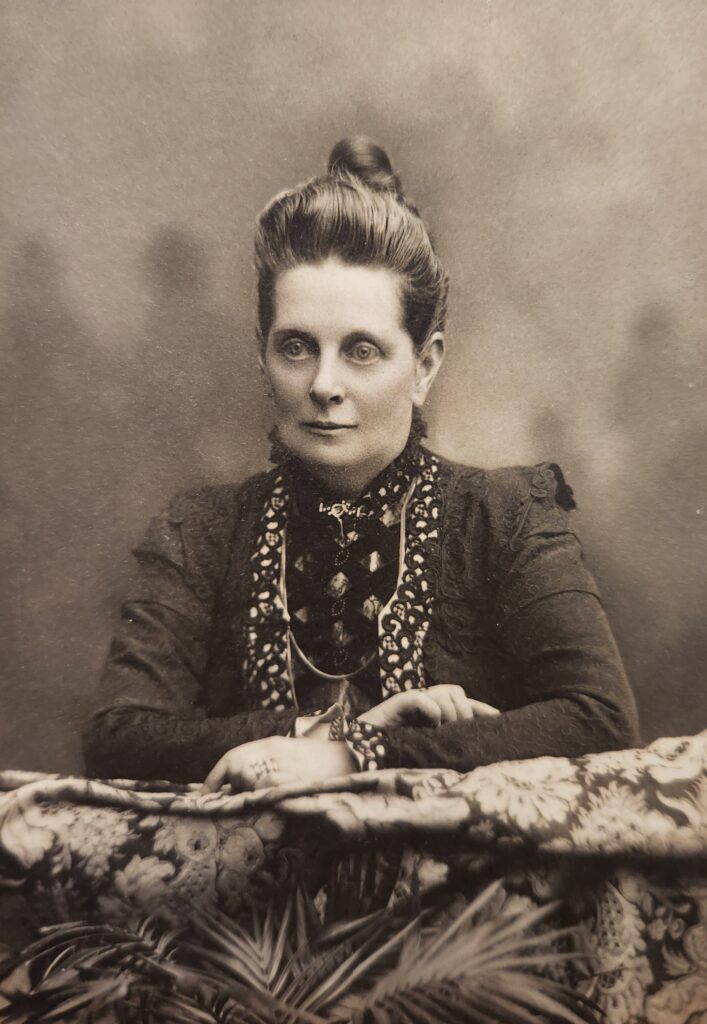
With the death of his wife in 1901, Henry’s life seemed to be at a low point. In response he went travelling and invested more in his hobby for sailing. It was only in 1900 that Henry had turned to sailing: in September of that year, he purchased a pilot schooner called ‘Mavis’ from a florist in Melbourne. The British-built vessel was 27 metres long and just over 5 metres wide, and was used primarily around Robe, where Henry had taken up a lease on a holiday house, Karrata House. He went on cruises across the South Australian coastline, and further afield, before upgrading to a larger yacht, called ‘Vera.’ Henry’s second yacht only lasted a few months: she arrived in Port Adelaide in January 1906, only to be sold in April. The reason was that Henry had placed an order for a third yacht to be built by Hawthorn & Co., based in Leith, Scotland. Named the ‘Adele’, after Henry’s only surviving sibling, the yacht was 44 metres long, and nearly 7 metres wide, with five bedrooms – plus crew accommodation – as well as a richly furnished smoking room and dining saloon, electricity throughout, and refrigeration. In recognition of his yachting pursuits, Henry was named as a member of the Royal Yacht Squadron in 1910.
Henry was an admired and respected employer. He paid his staff fairly, and through his work in building local bridges, improving roads, and supporting local causes by opening his gardens for fundraising efforts, he earned the respect of many. He was often referred to as ‘Squire Dutton;’ the title ‘Squire’ indicating a man of high social standing.
This social standing extended to Gawler, where in 1907, Henry purchased the flailing company, James Martin & Co., to ensure no local jobs would be lost. Thanks to his elevated position and network, he secured new manufacturing contracts for the firm, which kept dozens of men in a job, and ensured the continuing prosperity of Gawler. Henry furthered his pastoral interests by going into partnership with John Melrose on the North Booborowie Station, and even acquired the vineyard and orchard called Koonowla, at Auburn, which operates as a winery today.
By 1914, Henry had outlived his siblings, and had buried his wife and daughter. In January he cruised around Kangaroo Island on the Adele, and in April along the eastern Eyre Peninsula, but his health soon declined, and in August, a medical examination determined he had a blood clot on the brain. Following his death on 25 August 1914, Adelaide-based paper, The Journal, wrote, “No one spoke more highly of him than his employees, and when he was stricken on Sunday evening, August 16, the little community at Anlaby was deeply concerned. Mr Dutton had been ailing for some time, and the fact he was too unwell to attend service [on] Sunday afternoon – the first time in their knowledge he had missed while he was at home – somewhat prepared them for bad news.” At the time of his death, his son, Harry – along with his wife and children – were in England. He was buried at St. Matthew’s, Hamilton, following a quiet, private service in the church he built to honour his daughter.
